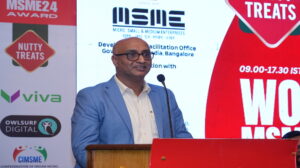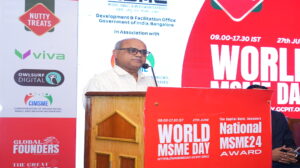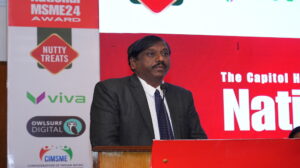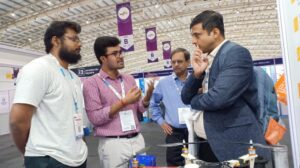SAP to set up another R&D campus in Bengaluru

BENGALURU: SAP is establishing a large new campus in Bengaluru near the international airport, which will significantly increase its R&D (research & development) presence in the city.
The company’s executive board member Bernd Leukert, who is in charge of products & innovation, and who was in Bengaluru on Friday to mark the company’s 20th anniversary in India, said it would be a 40-acre campus, double the size of the existing one in Whitefield.
The company had a ground-breaking ceremony on Thursday. SAP Labs India managing director Dilipkumar Khandelwal said construction would start as soon as the government approves the building plans. “It’s a testimonial to the great talent and abilities here, and the extent to which people here have contributed to the overall success of SAP,” Leukert said. SAP has 11,000 employees in India, of which 7,500 are in core R&D, making it the German enterprise software company’s second largest R&D centre in the world. The new campus will likely further strengthen India’s role globally. SAP’s worldwide R&D headcount is about 27,000.
Asked how many people the company expects to hire in the coming years, Leukert and Khandelwal declined to provide a figure. But Khandelwal noted that the company hired over 1,000 people in each of the past five years.
Leukert said SAP sees India as one of the massive growth opportunities. “We have said we are looking at tripling our market capitalisation, and this goes with the investment we are planning across the company, and India is one of the huge growth opportunities. Otherwise we would not have bought land double the size of what we have,” he said.
On the nature of hiring, Khandelwal said the company focused on lateral hiring earlier, but over the past few years, it has been ensuring that at least 50% of new hires are from college campuses. This, he said, gives the company a good mix of experience and youngsters who are more agile and savvy with new technology. He also said traditionally the company looked for BE and BTech talent, but increasingly it is focusing on getting people with industry knowledge, in order to be able to design full products for industries.
In its early years, the India centre customised for the domestic market. It then started contributing to the development of global products. Since 2011-12, it started moving entire responsibilities. “Today, it has become such a strategic location that no SAP product goes without an India footprint. There’s more and more product ownership here, entire architectures are built out of here,” Khandelwal said.
Khandelwal is also responsible globally for SAP’s Hana enterprise cloud business. “I sit out of here. Such a profile never existed in India before. It’s (Hana enterprise cloud) close to a $800 million business. Those earchitects sitting to transform a customer from an offline to a cloud world, it’s all happening here,” he said.
Leukert said at least two of the products developed out of India – the Fashion Management solution and the Asset Intelligence Network – have had far-reaching effects. The first involved bringing many of the world’s biggest fashion brands, including Armani and Luxottica, together to understand how their requirements had changed, and then developing an appropriate solution. The fashion market earlier had only a summer season and a winter season. Now, there are in-season changes, which means there’s need for instant feedback when a product is introduced, and if necessary do quick refinements. This in turn requires better planning and management of fabric and other materials. E-commerce and individualised products have also dramatically changed the industry.
“All these elements were incorporated in this (Fashion Management) product. It is now the default solution for how fashion companies steer their business,” Leukert said.
The Asset Intelligence Network identifies problems in running products before they occur through remote diagnostics. This helps a service technician to, say, replace a part before a breakdown. “The Italian railways is using it. In the first year, they saved 10% of their maintenance costs in the trains in which they implemented it. Once they implement in all, they’ll save some 100 million euro annually. Gartner is using it as a case study,” Leukert said






